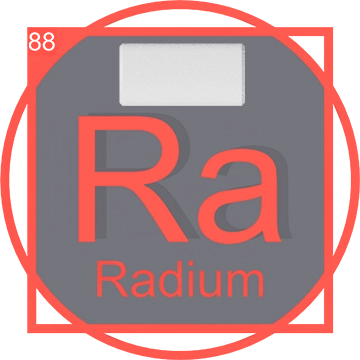Plutonium (Pu): Discovery, Science, and Applications
Introduction to Plutonium
Plutonium, symbolized as Pu and bearing atomic number 94, is a dense, silvery radioactive metal known for its significant role in both energy production and national defense. It is a transuranic member of the actinides series in the periodic table with notable applications in nuclear reactors and weapons.
Discovery of Plutonium

Plutonium was first synthesized on December 14, 1940, by a distinguished team led by Dr. Glenn T. Seaborg, Edwin McMillan, Joseph W. Kennedy, and Arthur Wahl at the University of California, Berkeley. This groundbreaking event occurred during experiments that involved bombarding uranium-238 with deuterons in the university's cyclotron, a type of particle accelerator. The initial reaction produced plutonium-238, marking the first time this heavy element was synthesized. Subsequent experiments led to the discovery of plutonium-239, an isotope even more stable and fissile than its predecessor, setting the stage for its future use in nuclear weapons and reactors. This pivotal discovery was not publicly disclosed until 1946, due to its potential implications for national security during World War II.
Pure Plutonium

Pure Plutonium is a heavy, silvery metal that tarnishes in air, forming a dull coating when oxidized. It is one of the most complex elements, highly radioactive and warm to the touch due to its radioactive decay. Plutonium exists in several allotropes and changes its structure depending on temperature and pressure, which can affect its density and volume significantly. Despite its hazardous nature, pure plutonium is a critical resource for power generation in nuclear reactors and is vital in the manufacture of nuclear weapons. Its ability to undergo fission makes it exceptionally powerful as a fuel source, although handling it requires rigorous safety protocols.
Plutonium in the Periodic Table
As part of the actinide series, plutonium is characterized by its complex electron configuration and radioactivity. Its position in the periodic table is crucial for understanding the properties of heavy, radioactive elements, which are pivotal in many modern technological applications.
Scientific and Technological Applications of Plutonium

Plutonium's primary use has been in the development of nuclear weapons and as a fuel in nuclear reactors. Plutonium-239, in particular, has a high rate of nuclear fission, making it an efficient nuclear fuel and a potent component of nuclear arsenals. Its capability to release a large amount of energy upon fission makes it crucial in maintaining national defense strategies and in providing a reliable power source for generating electricity in nuclear power plants around the world.

Beyond its notorious role in weaponry, plutonium is also used in space exploration. Radioisotope Thermoelectric Generators (RTGs), which use the heat released by the decay of plutonium-238, have powered spacecraft and planetary probes, including the Voyager missions and the Mars Rover. These RTGs provide a consistent and long-lasting power supply, enabling these missions to operate at great distances from the Sun where solar panels would be ineffective. This application highlights plutonium's critical role in pushing the boundaries of human exploration in our solar system.
Role of Plutonium in Modern Industries
While primarily known for its applications in nuclear and space technology, plutonium also has uses in the field of medicine. Plutonium isotopes are utilized in certain types of radiological diagnostic tools. Moreover, the metal's ability to generate heat from radioactive decay is explored for potential use in producing electricity in remote locations.
Production of Plutonium

Plutonium is not naturally occurring and is instead produced synthetically in nuclear reactors. The most common method involves bombarding uranium-238 with neutrons in a reactor. During this process, uranium-238 captures neutrons and gradually transforms into plutonium-239 through a series of beta decays. This transformation occurs in nuclear reactors worldwide, particularly in reactors designed to produce significant amounts of plutonium for both energy and defense purposes.
Associated Resources and Mining
While plutonium itself is not mined, its parent element, uranium, is extensively mined around the world, with major uranium mines located in Canada, Australia, and Kazakhstan. Uranium ores typically contain a mixture of several radioactive elements, including radium and thorium. The mining and milling of uranium ore are critical first steps in the chain of plutonium production.
Current Uses of Plutonium
Today, plutonium's primary use is in nuclear power plants as a fuel, particularly in mixed oxide (MOX) fuel, where it is blended with uranium to produce energy. It is also critical in the production of nuclear weapons, where plutonium-239's properties are harnessed to create highly efficient and powerful weapons. Additionally, plutonium-238 is used in Radioisotope Thermoelectric Generators (RTGs) to power spacecraft, satellites, and unmanned remote facilities.
Future Prospects of Plutonium

The future of plutonium is linked closely with advancements in nuclear technology and space exploration. In the field of nuclear power, ongoing research into fourth-generation nuclear reactors, which promise higher efficiency and safety, could expand the role of plutonium as a key energy source. Additionally, as long-duration space missions and colonization initiatives advance, the demand for RTGs and other plutonium-powered energy solutions is expected to increase, demonstrating the element’s pivotal role in powering future explorations into deep space.













